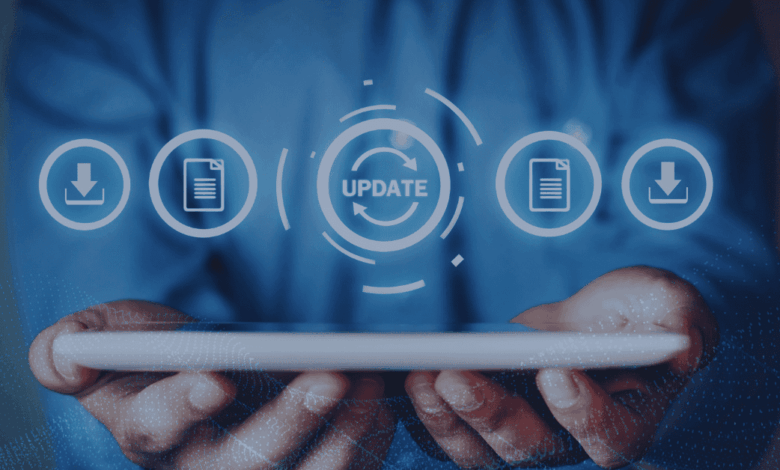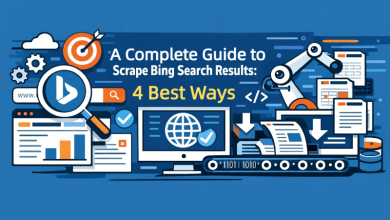
Your IT infrastructure isn’t just wires, servers, and screens. It’s the backbone of how your business communicates, stores data, serves customers, and keeps operations moving. In short, when IT runs smoothly, your business runs smoothly. But when it doesn’t? That’s when things fall apart fast and often in ways that aren’t just inconvenient but costly. Cybersecurity threats, data breaches, system outages, and even natural disasters aren’t just hypotheticals anymore. They’re real and increasingly common.
According to a 2024 Forbes article on cybersecurity, data security is no longer just a tech problem. It’s a major business risk. When ransomware locks your files or a power surge knocks out your server, it’s not just your IT team’s problem. It affects your entire business, from finance to customer service.
Embedding Risk Awareness Throughout the IT Lifecycle
Risk-aware IT infrastructure isn’t something you bolt on at the end. It’s something you build from the ground up, one step at a time. Here’s how that looks at each stage of your IT lifecycle:
In Planning: Identify Risks Early
As mentioned by the Cybersecurity Dive, every business faces different risks based on industry, location, size, and technology use. A retail business handling customer credit card data faces very different threats than a construction company managing job site schedules. During the planning phase, the goal is to figure out what risks apply to your business specifically.
This might include:
- Data security risks (e.g., customer information, financial records)
- Operational risks (e.g., system downtime, hardware failure)
- Compliance risks (e.g., HIPAA, GDPR, PCI-DSS)
- Physical risks (e.g., power outages, floods, fires)
In Design: Build Resilience In, Not On
Once you know your risks, design your infrastructure to handle them. That means choosing systems, vendors, and architectures that prioritize:
- Security (firewalls, encryption, multi-factor authentication)
- Redundancy (backup systems, mirrored drives, failover servers)
- Recovery (automated backups, disaster recovery plans)
- Flexibility (cloud services that scale with demand)
In other words, businesses must understand that you don’t just build IT infrastructure for performance—you build it for resilience. That’s where partnering with a managed services provider in Seattle makes a strategic difference—offering not just reactive support, but proactive infrastructure design that includes continuous monitoring, patch management, threat detection, and scalable cloud solutions. Build for protection, too. A beautifully fast network doesn’t mean much if it can’t bounce back from an attack or outage.
In Implementation: Set It Up Securely
Even the best plan can fall apart in execution. When it’s time to set up your infrastructure, follow secure configuration best practices. That includes:
- Changing default passwords
- Setting user permissions correctly
- Patching systems with the latest security updates
- Segmenting networks to isolate sensitive data
A lot of IT vulnerabilities don’t come from the tools themselves, they come from how they’re set up. That’s why implementation should be guided by both functionality and security from day one.
In Operations: Monitor and Maintain Proactively
This is where many businesses stumble. Once systems are live, the temptation is to set them and forget them. But that’s risky. Technology is always evolving, and so are threats. That means your IT infrastructure needs:
- Ongoing monitoring to spot unusual activity
- Regular updates and patches to keep defenses strong
- Proactive maintenance to prevent system failures
- Routine testing of disaster recovery plans
Risk-aware operations aren’t reactive. They’re about staying one step ahead, not scrambling after something’s gone wrong.
In Evolution: Adapt to New Threats and Needs
Your business isn’t static. Neither is the threat landscape. Maybe you add new locations, adopt remote work, or start using new software. These changes can introduce new vulnerabilities, and that’s okay, as long as you’re prepared to adapt.
A risk-aware infrastructure evolves with your business. It’s flexible enough to support growth but disciplined enough to maintain security. That means periodically reassessing:
- Your backup strategy
- Access controls and user permissions
- Your network architecture
- Your cybersecurity tools
Partnering for Comprehensive and Risk-Aware IT Management
Let’s be honest. Most small to mid-sized businesses don’t have the time, staff, or technical depth to handle all this on their own. And that’s perfectly okay.
Understanding the need for risk-aware infrastructure is step one. But the actual work of designing, deploying, and managing it? That takes serious expertise, consistent oversight, and a lot of technical muscle. That’s why working with an experienced Seattle managed services provider can make all the difference.
Here’s what a solid MSP will provide:
- Expertise – They stay on top of threats, compliance requirements, and new tech, so you don’t have to.
- Planning support – They’ll review your current risk posture and recommend systems that meet your needs and budget.
- Secure configuration: From network segmentation to firewall configuration, they’ll set everything up properly the first time.
- 24/7 monitoring – They’ll keep an eye on your systems around the clock, responding swiftly if anything goes wrong.
- Continuous improvement – As your business grows or technology evolves, they’ll help you evolve and stay secure.
What is the result? Peace of mind that your infrastructure isn’t just working, it’s working smart and safely.
So, if the management of IT has been a headache or you have reached the conclusion that your current setup might not be as risk-ready as you thought, it is perhaps time to contact a local Seattle managed services firm. Their personnel can help make IT go from a weak point to a competitive edge.
Conclusion: Designing Your Digital Future with Confidence
At the end of the day, building risk-aware IT infrastructure is about more than avoiding problems. It’s about confidence, confidence that your systems are ready for whatever the world throws their way.
When you engineer IT with a risk-aware approach, you don’t just engineer for what functions exist today. You engineer for tomorrow. You protect your operations. You safeguard your information. And you preserve the trust your customers, partners, and employees place in your business.


